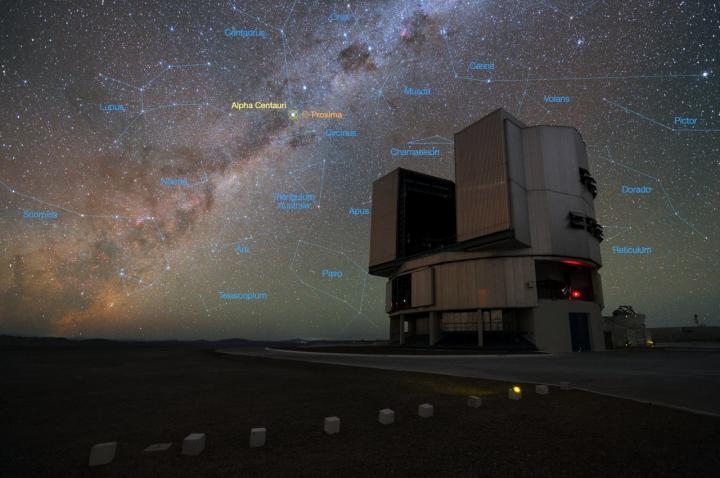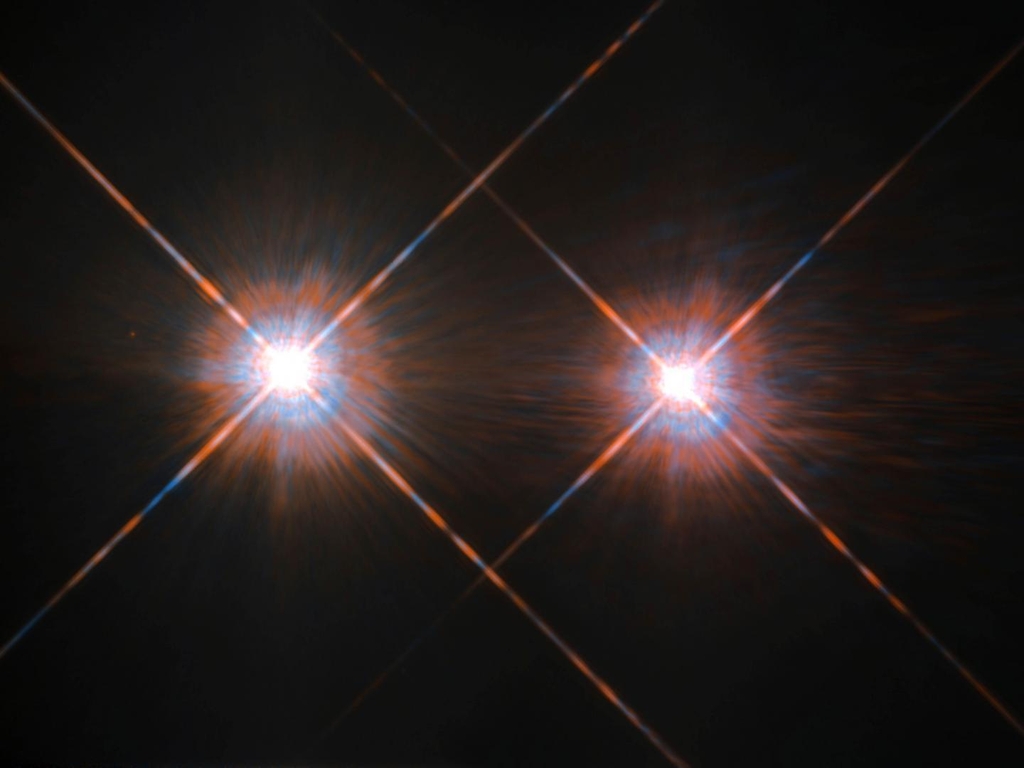Planetary light source capture in’Alpha Centauri A’, which was not found by indirect observation
“Additional verification required” cautious position… ‘Game changer’ if direct observation increases
–
[NASA/ESA/Hubble 제공/ 재판매 및 DB 금지]
–
(Seoul = Yonhap News) Reporter Eom Nam-seok = Most extraterrestrial planets found outside the solar system are large like Jupiter and are attached close to the stars.
These planets have been mainly discovered because they rely on an indirect method of confirming the existence of the planet by detecting the decrease in starlight when the planet passes in front of the star or the slight shaking of the starlight by the planet’s gravity.
However, with this method, it is difficult to find a planet in the so-called’habitable zone’ where water exists in a liquid state because it is at an appropriate distance from the stars.
Observing the image of the planet directly is the most reliable method, and researcher Kevin Wagner of the Steward Observatory at the University of Arizona in the United States has been drawing attention for the result of a direct observation of a stellar planet close to Earth beyond technical limitations.
According to the University of Arizona, an international research team led by researcher Sagan Felloin Wagner of the NASA’s Hubble Fellowship Program is an 8-meter ultra-large telescope (VLT) of the European Southern Observatory (ESO) in the Atacama Desert in Chile, 4.4 light years from Earth. I observed the’Alpha Centauri’, a three star system in the distance.
The star system consists of Alpha Centauri A and B, similar in size and formation to the Sun, orbiting each other, and Alpha Centauri C, a red dwarf, more commonly known as’Proxima Centauri’, orbiting two stars from the outside. .
In Proxima Centauri, it has been indirectly confirmed through the shaking of starlight that a planet twice as close to the Earth exists in the inhabitable area, but it has been known that there are no planets in Alpha Centauri A and B inside. .

–
[Yuri Beletsky/LCO/ESO 제공/ 재판매 및 DB 금지/ 이 기사에 한정 사용]
–
However, the research team revealed that it was possible to have planets within the inhabitable area of life, but not discovered by this separate indirect observation method.
The research team uses a so-called’deformable secondary mirror’ that can correct distortion as light passes through the Earth’s atmosphere, and optimizes it for mid-infrared wavelengths to reduce the starlight of Centauri A and B in tenths of a second. By developing a new technology that alternately shields each other and allows only one starlight to pass through, the “noise” caught by telescopes and cameras has been minimized.
Along with this, the research team observed Alpha Centauri for nearly 100 hours over a long period of time and accumulated more than 5 million images of 7 terabytes (TB·1TB=124GB).
The team found a light source named’C1′ as a result of removing all the stellar afterglow and false signals from the observation equipment from these images, suggesting that this light source could be an extraterrestrial planet within a possible habitat for life.
As a result of estimating the shape of the planets in the data through computer simulation, the research team found that C1 is the size of Neptune to Saturn, and that it is the distance from the Sun to Earth from Alpha Centauri A.
Researcher Wagner said, “We’ve found a light source that can’t be explained by a system error, as expected from a planet.” “There are signs that I can do it.”
The research team expressed a cautious position that it is impossible to rule out the possibility that C1 is an unknown equipment error without further verification.

–
[A. Ghizzi Panizza/ESO 제공/ 재판매 및 DB 금지/ 이 기사에 한정 사용]
–
The research team praised that the observation technology used this time has increased the ability to directly observe extraterrestrial planets by more than 10 times, and when next-generation telescopes such as the ESO’s Extreme Telescope (ELT) and the Giant Magellan Telescope (GMT) are deployed, life can inhabit. It was expected to increase direct observations of nearby stars that could have planets in the realm by a factor of 10.
Dr. Daniel Afey, associate professor of astronomy at the University of Arizona, as co-author of the paper, said, “If we make this proved by routine observation and find a planet in the inhabitable area of a nearby star with a heat signal, we can explore new worlds (alien planets) and explore the universe. It will be a game changer in the search for creatures.”
The results of this study were announced through’Nature Communications’.
<저작권자(c) 연합뉴스,
Unauthorized reproduction-redistribution prohibited>
2021/02/10 19:00 sent
–


